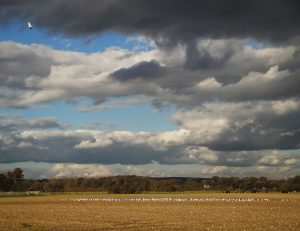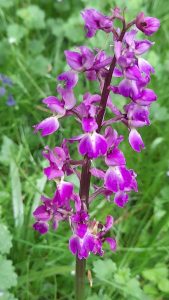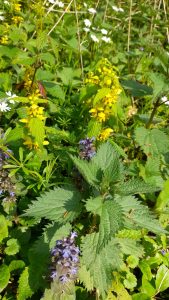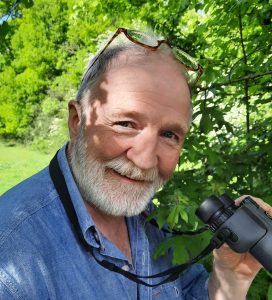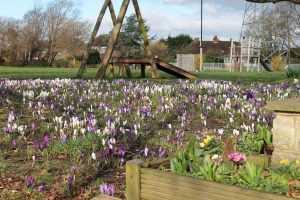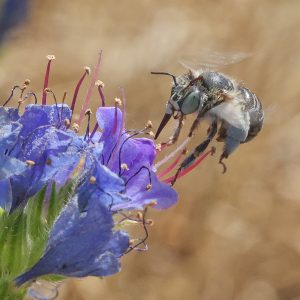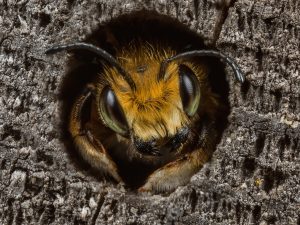Kevin, the head falconer from ‘Hawking About’ based in Arundel, gave over 100 members and visitors a wonderful opportunity to enjoy getting close and personal to several of his beautiful Birds of Prey, including a Barn Owl, Kestrel, Peregrine Falcon and and two Harris Hawks.
Not only were the audience enthralled by the precision indoor flying displays of these magnificent birds but were also educated along the way by Kevin imparting his extensive knowledge and passion that he had gained over many years. This initially started as a hobby for Kevin and he gradually developed the skills to enable him to train a collection of Birds of Prey and he now attends some of the top tourist attractions in the South of England including Arundel Castle, Parham House, Petworth Park and Natural Trust sites giving talks and flying displays.
Busby the Barn Owl was the first bird to show off his flying skills and headed straight for the ceiling bars looking down on the audience. With encouragement from Kevin tempting him with a piece of fresh mouse, he swiftly returned straight to his perch to greedily claim his reward. These birds have an average lifespan of 18 months in the wild and are the most widely distributed group of owls in the UK and they enjoy a variety of habitats, including open countryside, wetlands and roadside verges.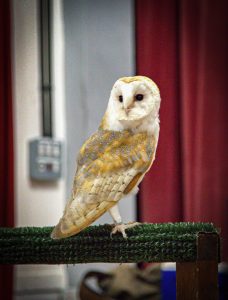
The next bird to show off its flying skills was a pretty Kestrel named Mo whose hunting skills are so well developed and with such razor-sharp vision, he is able to detect mouse urine in ultra-violet from the air but sadly 75% of Kestrels do not survive the winter in the wild.
Kevin then showed the audience the Peregrine Falcon, and these birds are the largest falcons in the UK with the male around a third smaller than the female. Their lifespan in the wild is only around 10 years but in captivity they can live for 25 years. Its distinctive feature is the black ‘moustache’ which contrasts with its white head.
A female Harris Hawk gave the last flying display of the day, which was shown alongside a male, and this formidable hunter is the only bird to hunt in a pack and will share out any food caught. They primarily hunt for rabbits, lizards, birds and occasionally carrion.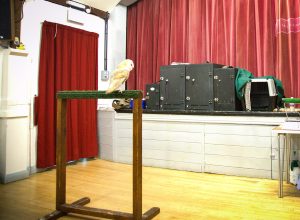
At the end of each flying session the birds were given the command of ‘Box’ by Kevin and amazingly each bird flew with great skill into its individual box – an astounding feat and could only be achieved by many hours of intense training and the special bond that is so evident between Kevin and his birds.
In Graham Tuppen’s absence, David Bettiss delivered the popular Nature Notes session following the usual break for refreshments. This month a Water Rail has been spotted swimming on the Rife north of the road bridge, also a number of Red-throated Divers and Red-breasted Mergansers have been seen off the coast at Goring Gap, alongside an amazing total of 220 Great Crested Grebes on the water. A member of the Group was fortunate enough to see an attractive little Weasel in his garden and it is believed there may be a small breeding colony somewhere along Ilex Way. While members were busy observing their gardens for the Big Garden Birdwatch there were reports of a Goldcrest, Greenfinch and a Song Thrush, although bird numbers were generally worryingly low. Various other sightings of a Heron, a Red Kite and a Buzzard together with a variety of Gulls plus 2 Skylarks were reportedly observed locally.
Stephen Abbott concluded the meeting by advising members there are still issues to be resolved regarding an additional property at 1, Sea Drive and also an application for a large garden structure has been submitted at 1, Birch Place in Ferring.

